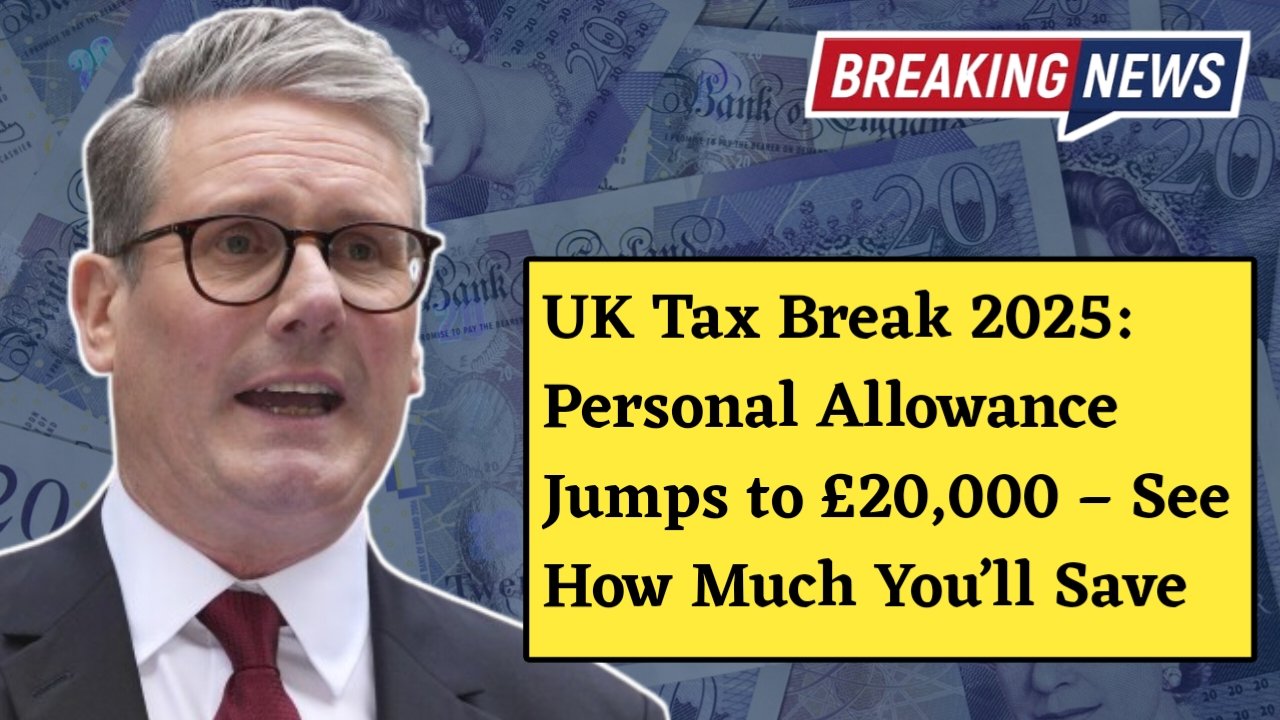The personal allowance is the amount of income you can earn before paying any Income Tax in the UK. For the past few years, the allowance has been frozen at £12,570, leaving millions of taxpayers struggling with what experts call “fiscal drag,” where wage increases push people into higher tax brackets without real gains in take-home pay. The new 2025 announcement that the personal allowance will jump to £20,000 marks the biggest tax break in over a decade, and it comes as a huge relief for households facing rising living costs, higher energy bills, and day-to-day financial pressures. By raising this threshold, the government aims to boost disposable income for workers, pensioners, and self-employed individuals alike, giving them more freedom to manage their budgets and save for the future.
How Much You Could Actually Save from April 2025
From April 2025, millions of UK taxpayers will keep more of what they earn. Under the current £12,570 allowance, anyone earning above that pays 20% basic rate tax on the difference. But with the threshold rising to £20,000, you won’t pay any tax until your income crosses that level. This means that every individual could save up to £1,486 per year in tax compared to the old allowance. For couples, that doubles to nearly £3,000 in savings annually, making it one of the most family-friendly tax reforms in recent times. These extra savings could go towards essential household costs, debt repayments, or even long-term investments like pensions and ISAs, giving families more breathing room in their monthly budgets.

Why This Move Could Change Household Finances Across the UK
The increase in personal allowance is expected to provide a financial cushion for lower- and middle-income earners, who have been hardest hit by the cost of living crisis. For someone earning £25,000 annually, the extra allowance means paying tax on only £5,000 instead of £12,430, which significantly reduces their liability. It also means that many part-time workers and those on minimum wage may pay little to no Income Tax at all, boosting their net earnings directly. Economists predict that this change could inject billions of pounds back into the economy as households have more to spend on goods and services, ultimately supporting local businesses and industries.
Impact on Higher Earners and the Overall Tax System
While the biggest benefits will be felt by middle-income households, higher earners will also enjoy some relief. A worker earning £60,000 annually will save the same £1,486 as everyone else on the first £20,000 of tax-free income, though they will still be subject to the higher 40% tax rate on earnings above £50,270. The government has not yet confirmed if higher thresholds will also be adjusted, meaning the focus remains on helping ordinary earners rather than the wealthiest. This reform strikes a balance between fairness and fiscal responsibility, targeting those who need the extra financial support the most.
Could This Lead to Long-Term Tax Reforms?
The jump to £20,000 is seen as a bold political move, especially with the pressure of upcoming elections and ongoing debates about economic recovery. Some analysts believe this could be the beginning of a broader tax reform strategy, possibly including adjustments to National Insurance contributions or business taxes to encourage investment. The Treasury, however, faces challenges in balancing lost revenue from reduced tax collections with the need to fund public services like healthcare, education, and infrastructure. Still, supporters argue that boosting household income will generate economic growth, which in turn will replenish government revenues in the long run.
What UK Families Should Do to Maximise Their Savings
With the allowance rising, families should reassess their tax planning strategies. Couples can look into income-splitting opportunities, ensuring both partners make full use of their tax-free threshold. Pension contributions, ISAs, and savings accounts will also become more attractive, as taxpayers can redirect the money they save from reduced taxes into long-term wealth-building tools. For self-employed workers, freelancers, and small business owners, this increase offers extra breathing space to reinvest earnings, manage expenses, and strengthen financial security. Consulting with a tax advisor could help households take full advantage of the changes and identify new opportunities to save.
Final Thoughts on the £20,000 Personal Allowance
The 2025 rise in the UK personal allowance to £20,000 represents a significant step in easing the financial burden on millions of citizens. It means more take-home pay, less stress about tax bills, and greater flexibility in managing household budgets. While challenges remain for the wider economy, this reform is likely to be one of the most welcomed government decisions in recent years. For taxpayers, the message is clear: from April 2025, your hard work will pay off more than ever before, and this boost could be the start of a more financially secure future for households across the United Kingdom.
